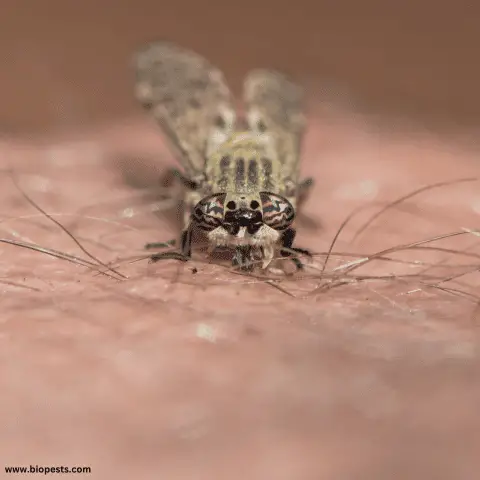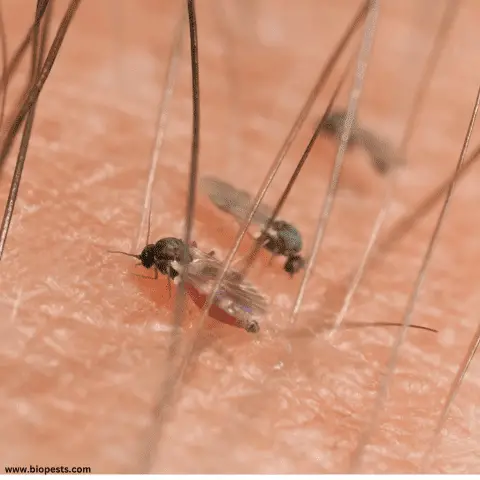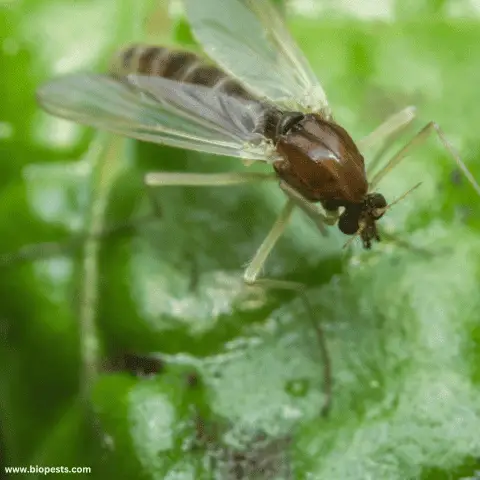Flies, those sneaky little creatures who are always buzzing around, have managed to keep their secrets hidden from us ordinary humans. But the burning question on everyone’s mind is – do these flies bite? Let’s unravel the mystery, shall we?
The answer isn’t as straightforward as one might expect. While most common houseflies are harmless, several species indeed possess the ability, and the habit, to bite humans. Discover the fascinating world of species known for their bites and learn why they bite, the potential health consequences, and how to protect yourself.
We will also unravel the reasons behind their biting behavior, the potential health risks linked to their bites, and discuss effective preventative methods and treatment options.
Types of Flies That Bite
Have you ever been outdoors and felt a sharp pain around your legs or arms? If so, then there’s a good chance that you may have experienced the annoyance of flies biting. Flies are more than just annoying pests; they can be carriers of diseases and irritate our skin through their bites. To help better understand which type of flies commonly bite humans, this blog post will cover some common species, what they look like, where they live in the environment, and how to control them if needed.
Horseflies: The Painful Biter
One of the most common species of biting flies are horseflies.
Found worldwide, horseflies are known for their fast and painful bite. Equipped with scissor-like mouthparts that slice into skin, horseflies tend to feed on the blood of their victims. Unlike mosquitoes, which insert a needle-like appendage to draw blood, horseflies make an incision in the skin, leading to a sharp, burning sensation when bitten.
These creatures absolutely love the heat and can’t get enough of basking in the sun. You’ll often spot them hanging out near water, where they lay their precious eggs.

Black Flies: The Swarm Attackers
Black flies, on the other hand, are generally smaller than horseflies but can be just as bothersome. Notorious for their swarming behavior, black flies tend to bite around the head and neck of humans and animals, leaving behind a small, red swelling that frequently itches horribly. They are prevalent in fast-flowing, clean streams and rivers, where they lay their eggs on semi-submerged objects, such as rocks and logs.
These flies are famous for their biting frenzy during daytime, especially in humid, overcast conditions.

Beat the Sand Fly Menace!
In both the tropical and subtropical parts of the globe, sand flies certainly can be deemed a notable menace. These diminutive insects are bloodsuckers, most active at night, and readily drawn towards mammals due to their carbon dioxide emissions. Sand flies are infamous for their biting, which, aside from being painful, is also known for transmitting diseases like leishmaniasis and sandfly fever. They thrive in damp environments, laying their eggs in areas with organic matter, such as compost heaps, leaf litter, or animal waste.

Why Do Flies Bite?
All flies are not created equal. Some are harmless, while others not only become an irritating presence but are also inclined towards biting. Discovering the reasons behind fly bites is crucial for getting insights into their feeding behavior. Flies known for their parasitic behaviors, namely mosquitoes, sand flies, black flies, and horse flies, resort to biting while feeding. Their mouths are fortified with mechanisms meant for biting and piercing, enabling them to suck blood from their selected hosts, which could be either humans or other animals. The female mosquitoes, sand flies, and black flies bite primarily because they need blood protein for egg production.
Biting flies can zero in on their hosts because of multiple mechanisms such as visual cues, the body’s warmth, respiration, and even certain secreted skin odors of the host. Having identified their target, these flies execute their bite, drawing blood. A minor quantity of saliva is typically introduced into the bite, which works as an anti-coagulant to prevent blood clotting. This saliva is the main cause of the itching and discomfort that follows a fly bite.
Unveiling the Truth: Debunking Fly Biting Myths and Facts
There’s a common misconception that every fly that lands on you is trying to bite you, but this isn’t the case.
Ordinary houseflies, for instance, do not bite – their diet primarily consists of decomposing material and sugar, which they consume by regurgitating enzymes onto the food and sucking it back up (yuck!).
Another misconception is that fly bites result in disease transmission. Although some species of biting flies can spread certain diseases, this is not as common as people might think. Most fly bites are merely annoying and cause mild discomfort, and are generally not harmful. However, it’s crucial to seek immediate medical care if you notice excessive swelling, redness, or increasing pain at the bite site as these symptoms could signal an allergic reaction or infection.

Symptoms and Health Risks Associated With Fly Bites
Recognizing the Symptoms of Fly Bites
The severity and type of symptoms resulting from a fly bite can vary significantly depending on the species of the fly and the individual’s reaction to it. Typically, a fly bite may result in a small red spot at the center, encircled by a red, swollen area. It may also result in general itchy bumps or welts and localized pain or tenderness. Some people might even experience severe reactions, such as fever, body aches, or swelling in the glands. Therefore, monitoring these symptoms is crucial as they might denote a more serious response to the bite. In case of severe symptoms, seeking immediate medical attention is recommended.
Understanding the Impact of Fly Bites on Our Health
Flies aren’t just pests; they are carriers of a vast array of diseases harmful to human health. With the potential to infect humans with diseases such as Salmonella and E.coli, which can trigger food poisoning, or parasitic worms resulting in serious gastrointestinal issues, their impact is not just skin-deep. Certain species like the sand fly carry diseases like Leishmaniasis which can cause symptoms ranging from skin sores through to fever, and even liver or spleen damage. Another species, the tsetse fly, is a vector for African sleeping sickness – a potentially fatal disease if untreated. Furthermore, an infected fly bite could lead to cellulitis, an infection impacting the skin and underlying tissues. Owing to these health risks, if a fly has bitten you, it’s crucial to clean the wound thoroughly and monitor closely for signs of illness, such as fever or swelling of lymph nodes.
Preventing and Treating Fly Bites
How to Proactively Prevent Fly Bites
Protect yourself from fly bites by taking proactive steps to minimize your exposure. An effective solution is using insect repellents, available in forms like aerosols, creams, sprays, and lotions, to apply directly on skin or clothing. When choosing a repellent, ensure it is EPA-registered, signifying its safety and effectiveness. If you are looking for an organic, DEET-free product, I recommend Lafe’s, available on Amazon.
Another product I strongly suggest is Apectek bug zapper! This state-of-the-art device has been designed to effectively catch and eliminate mosquitos, flies, and any other pesky flying insects.
Equipped with advanced technology, this bug zapper offers unparalleled performance. Its powerful electric grid is capable of attracting and instantly killing insects, delivering great results in a matter of seconds. With this device, you can enjoy a peaceful and pest-free environment, whether you’re indoors or outdoors.
Another prophylactic strategy is covering the skin by opting for long-sleeved shirts, pants, socks, and hats. This can lower your chances of drawing the pesky interest of a fly. Regular inspection and repair of window screens can also be the key to preventing flies from infiltrating your home.
Fun fact: did you know that your choice of color can further discourage flies? Colors like blue and yellow tend to attract more flies. Keeping this fact in mind while selecting your outfit or arranging your outdoor spaces can make a significant difference!
Treating Fly Bites
The first step in treating a fly bite is cleaning the area with mild soap and water. This will remove any bacteria that may cause an infection. Cold compresses or ice packs can help reduce swelling and ease any discomfort, while over-the-counter hydrocortisone cream or calamine lotion can alleviate itch and inflammation.
If the bite develops into a more severe reaction, over-the-counter antihistamines can be used to manage symptoms. However, if the symptoms persist or worsen, seek medical attention immediately. Some signs of a serious reaction include difficulty breathing, swelling of the lips, tongue, or face, and signs of infection such as pus, increased pain, or red streaks leading away from the bite.
Lastly, it’s worth mentioning that some individuals choose to use natural remedies for relief. These include applying Aloe Vera or a baking soda paste and water paste to the affected area. These remedies could help soothe the skin and reduce inflammation. However, if you have sensitive skin or an allergy, it’s recommended to consult a healthcare provider before using any natural remedies.
Conclusion
Understanding that not all flies are created equal and that some can cause harm is the first step towards preparing ourselves and staying safe.
Discovering the potential health risks associated with these insect bites, and learning the signs of severe reactions, can equip us to respond quickly and effectively. Plus, knowing about prevention and treatment empowers us to enjoy outdoor activities more confidently. Remember, it’s important to respect and understand all creatures, big and small when sharing our space with nature – including those pesky biting flies!
Some of the links above are affiliate links, meaning at no additional cost to you, I will earn a commission if you click through and make a purchase.

